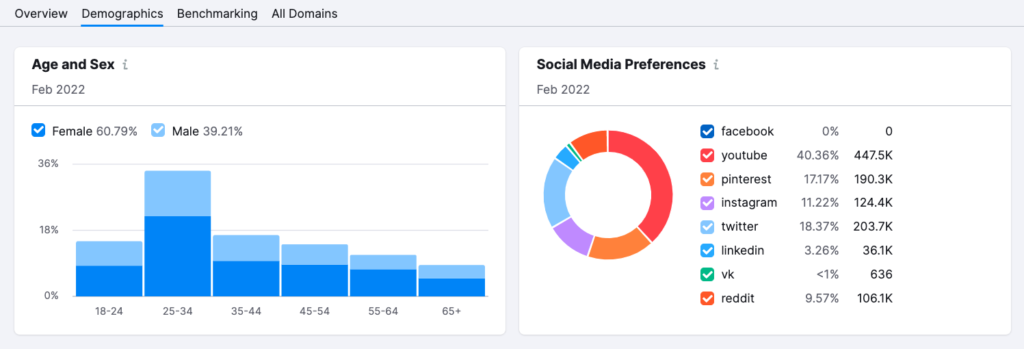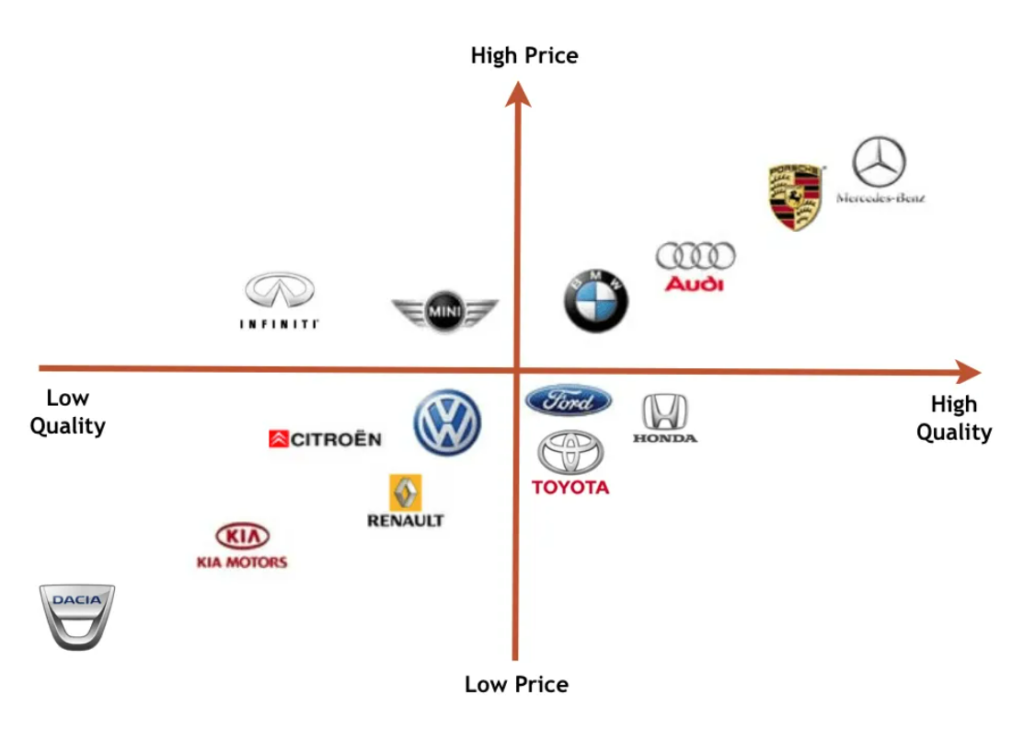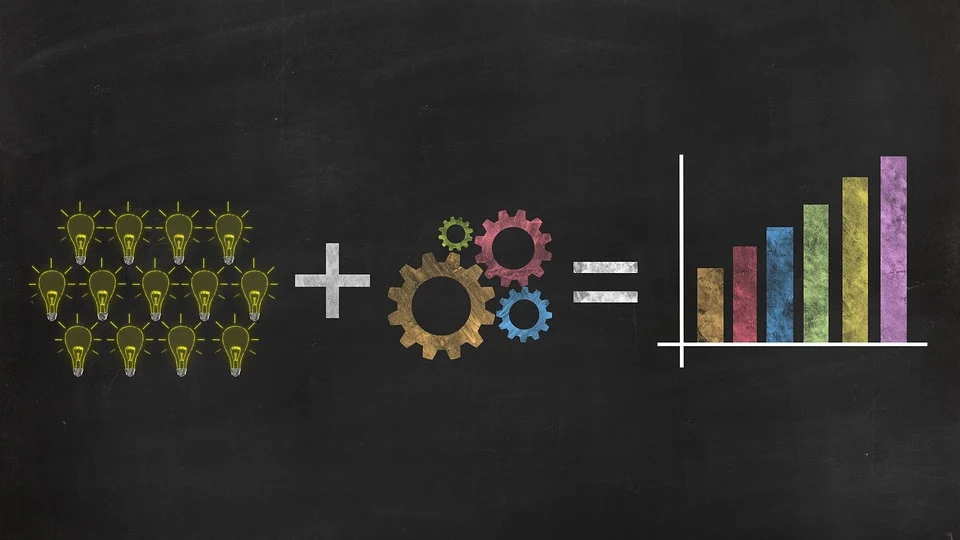Marketing is not only essential to your business, but it’s also a hugely lucrative industry. The digital advertising and marketing sector alone was estimated at some $531 billion in 2022 and is expected to reach a staggering $1.5 trillion by 2030.
Such a massive market means fierce competition. Marketing teams and agencies need to get their tactics right.
Modern marketers can face many challenges and a wide choice of strategies. One increasingly popular approach is the Segmentation, Targeting, and Positioning (STP) model. Many agencies and teams are now turning to STP as their primary game plan.
So, what is STP? What benefits does it offer your marketing staff and your business? And how do you adopt it as your main model?
What is Segmentation, Targeting, and Positioning (STP)?

Image alt text: A visual explanation of the Segmentation, Targeting, positioning (STP) model.
Segmentation, Targeting, and Positioning is a model that uses three steps to identify the relationship between your business and its ideal customers.
It starts with the segmentation of your customer base and target demographics. It then targets those different segments and positions your business to meet their needs and expectations. Essentially, it divides your customer base up into smaller, more focused groups.
While no two customers are exactly the same, you can identify similarities within certain demographics. This allows segmentation according to a possible range of factors such as age, gender, spending habits, geographical location, etc.
By placing your customers in different segments, you can better understand their tastes and preferences and personalize marketing efforts.
Research shows that 72% of customers only want to engage with marketing that is personalized to their interests and desires. Adopting the STP model allows you to move from marketing that focuses on your products or services to an approach that focuses on your actual customers. STP is grounded in the idea that targeted efforts can mean a more successful business.
STEP it up: How your customers can help your business
If you are new to STP, many marketers think of the acronym STEP – Segmentation + Targeting Equals Positioning. This logic is that, if properly done, targeting your segmented customers will lead to the better positioning of your business in the market. Let’s look at the stages involved in more detail.
1. Segmentation

Image alt text: A data visualization of demographic segmentation.
Segmentation will not be a new concept to you. It involves analysis of your customer data to create different groups or segments based on factors that you’ve identified. For example, you may notice from your analysis that a significant percentage of your customers buying CCaaS solutions are located in a specific tri-state area. You would therefore create a segment that recognizes this.
The majority of marketers tend to work with four main types of customer segmentation:
- Geographic. As in the example above, this focuses on where your customers are located. This could be relevant in many ways. It could define their proximity to your warehouses, thus meaning different shipping costs. It could also identify the type of products they could want; someone in a state that is hot all year (eg, Hawaii) is unlikely to need winter clothing.
- Demographic. This is the most wide-ranging segment, and you might choose different demographic factors to decide your final segment(s). Those factors can include age, profession, gender, and education level.
- Behavioral. This segmentation is based on analyzing the data you have on how customers interact with your organization. You can look at the frequency of their purchasing habits, how much they spend (thus allowing you to identify high-value customers), what their historical purchases have been, and even what they have frequently browsed without purchasing.
- Psychographic. This segment is more based on who your customers are rather than what they do. It could identify their hobbies and favorite activities (potentially useful to crafts or sports equipment business), their lifestyle, or their opinions (someone opposed to big pharma would be a good target for a natural remedy/health food business).
2. Targeting
After you have segmented your customers into different groups, you need to think about which of them you should prioritize for targeting. Investing in your current customers can go a long way to long-term growth.
You could make a list with your highest priorities at the top and then have segments in descending order of how ‘useful’ to your business you see each segment as being. You will want to consider the customer acquisition costs (CAC) of each segment and how likely conversions are from that segment.
There are many different factors that will decide your priority segments, and those factors can change over time. A segment that has an interest in constant contact and salesforce integration this year may be more focused on different products or services next year.
However, there are some common qualifiers you can apply across different segments to help you make final decisions.
- Segment size. How big are each of your identified segments? Perhaps more importantly, what is the likelihood of that segment growing (or shrinking) in the future? A small segment may not offer a good ROI (return on investment) unless the customers in that segment are frequent and high-value customers.
- Profit margins. Which segments offer the highest profitability and ROI for your marketing spending? Data that can help you decide this includes average order value (AOV) and customer lifetime value (CLV).
- Reachability. How much effort – and spending – will you need to put into each segment? For example, if a segment can only be reached by television advertising, then it will likely have higher CACs than a segment that can be reached via social media.
3. Positioning

Image alt text: A visualization of customers’ perception of car brands in terms of price and quality.
You can see how the STP model is progressing. You have segmented your customers into clear groups and examined them in more detail to see which ones will provide the best overall ROI. Now it’s time to move to the final step; positioning. It is very likely that you have multiple competitors in your sector, so stop and think: what makes you stand out?
It may be relatively straightforward to use SEO and other tactics to make your business prominent in organic and paid searches. But when it comes to marketing, how do you stand out and make customers pick you over a competitor?
There are three main types of positioning to think about when it comes to turning potential buyers into successful conversions. Combining these three is usually the best tactic.
- Functional positioning. This type of positioning involves solving identifiable problems and offering solutions. For example, if you’re in the telephony field, one of your targets’ common questions might be: ‘What is VoIP caller technology, and what benefits will it bring to my business?’ By showing you understand their needs and offering the best solutions, you can help drive them through your sales funnel to a conversion.
- Symbolic positioning. This appeals more to how customers see themselves and what products they want to massage their ego. It often applies to high-end items such as a top-of-the-range stereo or the latest OLED (organic light-emitting diode) TV. Other companies may offer similar products, but you position yourself as offering the best of the best.
- Experiential positioning. With this, you focus less on what the products or services can do for a customer and more on how they make them feel. They may have an emotional connection with your brand, or your products simply make them feel good. An example of this could be a customer who feels an affinity with a certain brand of beauty product.
What are the benefits of STP?

Image alt text: Marketing colleagues having a meeting.
If your marketing team is rooted in its existing strategy, they may ask why they should change to STP and what benefits it will bring. They may already know the benefits of personalization, but STP can take that concept to the next level:
- More focused marketing
With STP, you can easily identify what channels connect with your customers and which don’t. That means you can divert investment from poorly-performing channels and concentrate on the ones that will produce tangible results. - Better messaging
With more precise segmentation and accompanying buyer personas, the overall messaging from your brand becomes a lot more personal. Now that you really know the customers you are targeting, it means your messages can ‘speak’ to them more efficiently. - Improved progress and growth
STP is not just about higher sales and better conversion rates. It can also help your organization as it moves forward. If you want to introduce new products, you have clear segments you can survey or ask questions of. Good product innovation can be the lifeblood of any company that wants longevity. It can also mean better data collection and can aid company growth.
Why use STP in your business?

Image alt text: A blackboard that shows ideas plus strategy equals growth.
Change can be challenging, but it can also be rewarding. The ultimate goal of any marketer is to improve results across the board; better sales figures, higher retention rates, improved customer satisfaction, more revenue and profits, and so on. If your current marketing strategy is working well, then you may not want to change. But if you have doubts about its overall efficiency, it may be time to consider adjusting.
In an increasingly digital world, STP marketing is a model that suits that world and fits perfectly into an omnichannel approach. Your marketing team may already use many aspects of STP to varying degrees of success, but combining them together into one strategy can make a real difference to your results.
Stay Ahead of the Game with MTC Podcast, Your Go-To Source for Cutting-Edge Martech Insights, the Latest Martech News, and Expert Updates from Top Business Leaders!
ABOUT THE AUTHOR

Alwayne Powell, Director of International Digital Marketing, 8×8
Alwayne Powell is an experienced performance marketing leader with an extensive background in the digital space. They are the current Senior Digital Marketing Manager at 8×8, an enterprise VoIP solutions for business and leading communication platform provider. You can find them on LinkedIn.


